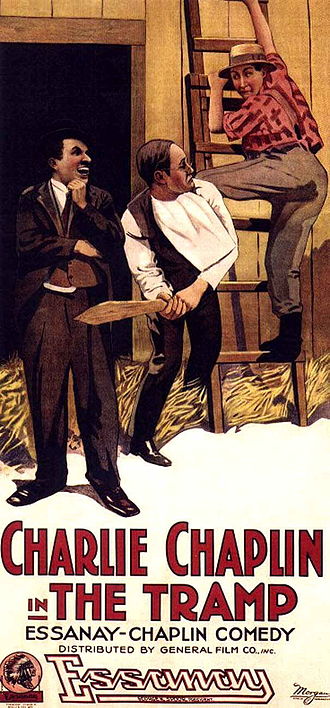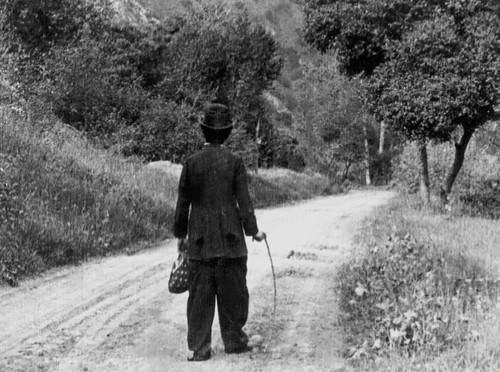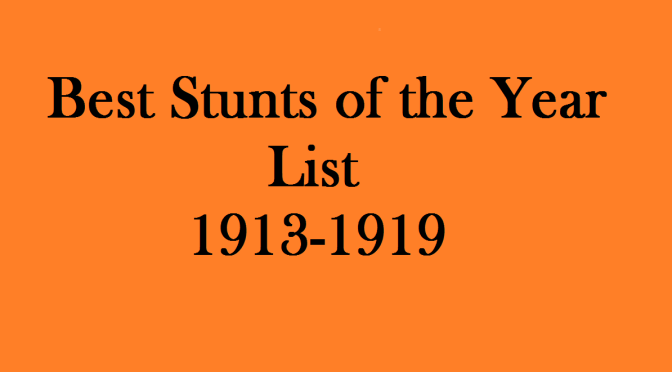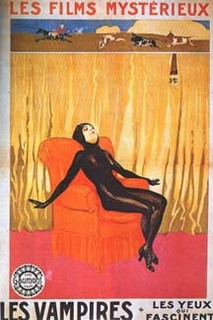It should be no surprise to anyone that I open this blog with the Master himself, Charlie Chaplin. He gets my first vote for his film,” The Tramp”. It is actually Chaplin’s sixth film with Essanay Studios. The Tramp marked the beginning of The Tramp character most known today, even though Chaplin played the character in earlier films. This film marked the first departure from his more slapstick character in the earlier films, with a sad ending and showing he cared for others, rather than just himself.
Plot – The Tramp (Charlie Chaplin) meets his dream girl (Edna Purviance) and takes a job on her Father’s (Ernest Van Pelt) farm. The Tramp helps around the farm, including getting rid of criminals. Everything is perfect, until the Tramp meets his dream girls’ boyfriend. He doesn’t want to get in the way of her happiness, so the film ends with the Tramp heading on back down the road.
 Directed, Written, and Starring Charlie Chaplin
Directed, Written, and Starring Charlie Chaplin
Produced by Jess Robbins
Also Starring Edna Purviance and Ernest Van Pelt
Cinematography by Harry Ensign
Edited by Charlie Chaplin
Distributed by Essanay Studios
Release Dates April 11, 1915
Run Time 32 minutes
Goof – Near the end of the movie, the “Tramp” writes a note and there are two separate shots of it edited in. Both notes are in completely different handwriting and the word “good bye” is spelled differently. But Charlie couldn’t blame the editor because… Yep, you guessed it! It was himself.
Sir Charles Spencer “Charlie” Chaplin, (16 April 1889 – 25 December 1977) was an English comic actor and film-maker who rose to fame in the silent film era. Chaplin became a worldwide icon through his screen persona “the Tramp” and is considered one of the most important figures in the history of the film industry.
Chaplin’s childhood in London was defined by poverty and hardship. His Father was mostly absent and his Mother was committed to a mental institution, so Charlie began working at a very young age. He always preferred performing to the workhouses, so he toured music halls and later worked as a stage actor and comedian. At 19 he travelled to America and began working for the Fred Karno Company, appearing in the popular Keystone comedies. He soon developed the Tramp persona and formed a large fan base. Chaplin directed his own films from an early stage, and continued to hone his craft as he moved to the Essanay, Mutual, and First National corporations. By 1918, he was one of the best known figures in the world.
In 1919, Chaplin co-founded the distribution company United Artists, which gave him complete control over his films. This is where he wrote, directed, and produced many films that rank on various industry lists of the greatest films of all time.
Chaplin’s later years are marked with controversy as he found his popularity decline. He was accused of having communist sympathies and was criticized for having marriages to much younger women. There was even a scandal involving a paternity suit. Eventually, an FBI investigation was opened, and Chaplin was forced to leave the United States and settle in Switzerland.
In 1972, as part of a renewed appreciation for his work, Chaplin received an Honorary Academy Award for “the incalculable effect he has had in making motion pictures the art form of this century”. Today, he continues to be held in high regard and is often celebrated as one of the most pivotal stars of the early days of Hollywood.
Just as a side note, I think that Robert Downey Jr’s portrayal of Charlie Chaplin in the film “Chaplin” was brilliant. It’s a travesty that he didn’t win an Academy Award for it, but you’ll have to wait to read all about it in my next series, “100 Years of the Best Oscar Snubs”.
Top 10 Charlie Chaplin Films (As rated by IMDB)




